Welcome back to our bi-weekly series on Gene Roddenberry’s work between Star Trek incarnations. Last time we looked at a boy and his robot in The Questor Tapes. This time we return to the land of the PAX in Planet Earth.
A large chunk of Star Trek’s mythology revolves around NBC’s “unprecedented” willingness to order a second pilot after Gene Roddenberry’s first attempt didn’t quite work for them. In reality, it was pretty common at the time for networks to order a reworked second pilot, usually because they liked the concept but not the casting. The Dick Van Dyke Show, Gilligan’s Island and The Munsters (which was originally in color) are just a few examples. But no one can doubt that Roddenberry was the king of second (and third, and forth, and fifth) chances. After Genesis II was passed on by CBS, ABC was willing to give the idea another shot on their dime. The outcome was Planet Earth (not to be confused with the BBC documentary series), a completely retooled and recast version of the adventures of 20th Century scientist, Dylan Hunt, in a post-apocalyptic future.

Aired a little over a year after Genesis II, Planet Earth hit TV screens in April of 1974. Most critics felt it was the better of the two efforts, comparing John Saxon’s interpretation of Hunt favorably to Captain Kirk and praising its improved pacing. While Genesis II was not as well paced as its sequel and more than a bit corny, there’s a lot I prefer about it. I like Alex Cord’s Dylan Hunt better, for one. Saxon’s Hunt is more Kirk like, upstanding, in command, and willing to throw a punch, but that’s only good if you’re interested in more of the same. I never looked at Genesis II as a stealthy method for bringing back Star Trek. I liked it as its own property.
The PAX, a pacifistic group of NASA descendants, now live above ground in what’s allegedly Albuquerque, New Mexico, but is really UC Irvine’s Langson Library and Murray Krieger Hall. Funny enough, the Planet of the Apes series, which CBS picked up instead of Genesis II, would shoot on this same location this very same year.
The PAX are more like the Federation than ever before, actively sending out teams of explorers in slick, streamlined uniforms. Their technology is more advanced, with intricate medical procedures, tricorder-like devices, and planet-spanning communicators worn on the breast like they would later be on Star Trek: The Next Generation. Hunt even delivers a kind of “captain’s log” at the beginning of the film right after the opening narration. A narrator and a captain’s log? Did I say this film was better paced than Genesis II? I may have to rethink that.
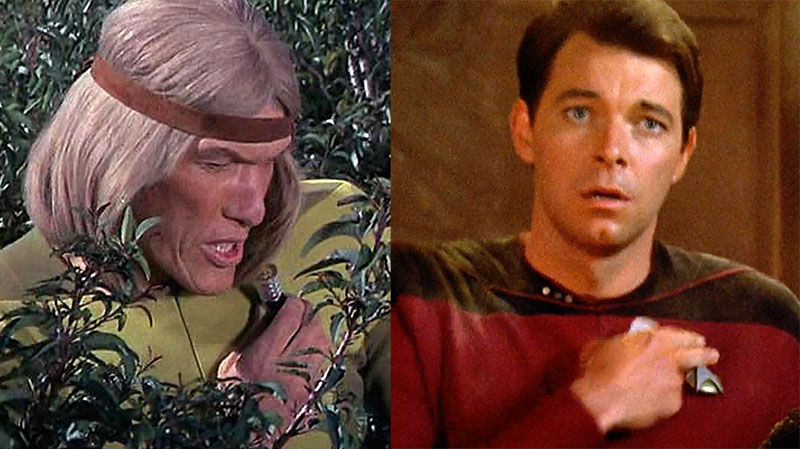
It’s no surprise that the new PAX jumpsuits look and perform like the first and second season Next Generation ones as they were both designed by William Ware Theiss, who created the original Star Trek uniforms as well as the revealing speedo-togas in Genesis II. According to Theiss, the same lime green material that appeared to be mustard yellow on the Original Series command tops was used for the PAX outfits. Depending on the film stock and lighting the PAX uniforms do indeed turn yellow in certain shots as well as in some promotional materials.
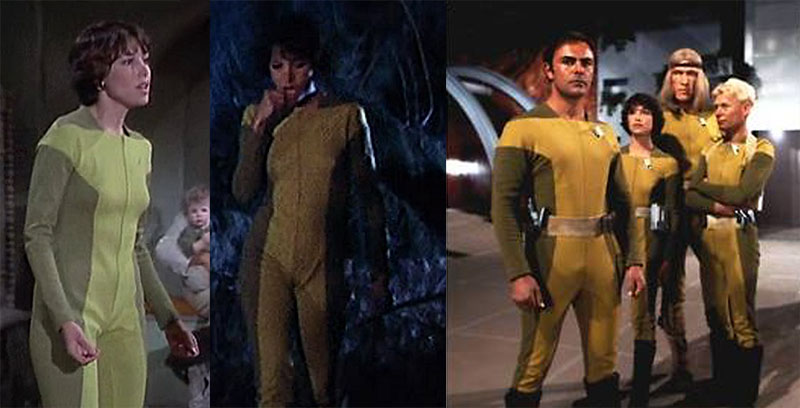
Beyond its tone and plot points, though, the film also looks like a throwback. Directed by Star Trek veteran Marc Daniels, Planet Earth has the flat lighting and wide, lifeless angles of your average 1960’s second-rate drama. Gone is much of the dark, cinematic flair of Genesis II. Even the stock subshuttle shots look out of place in the new pilot. I’m not blaming Daniels for this. His tenure on Star Trek was legendary, including amazingly shot episodes like “The Man Trap” and “Mirror, Mirror”. After all, Planet Earth also lacks any interesting sets or props. The matte painting of Tyrania is reused to depict long shots of the new PAX metropolis. Everything takes place in an open field, a ranch set that was probably made for another production, and the aforementioned campus. Even when a member of the team is injured we never see the inside of PAX as we did in Genesis II. When we find him convalescing from major heart surgery at the end of the episode he’s inexplicably on a bench in the open air. ABC was clearly being stingy.
Fortunately, Saxon’s Hunt isn’t completely Kirkified. He still retains some of the violent nature of Cord’s Hunt, needing to be calmed down by a fellow PAX lest he stab an enemy in the face during a struggle. He also doesn’t have all the answers, discovering the moral of the story at the end, rather than preaching something he knew all along. Of course, what that moral is can be tricky to figure out. Genesis II’s central struggle concerned how a society can defend itself and others from tyranny while maintaining a philosophy of total pacifism. The film didn’t just solve that conundrum, it made me believe its sincerity despite its campy trappings. The problem with Planet Earth is that it wants to deal with a very loaded and relevant topic but doesn’t bother to treat it seriously or fairly.
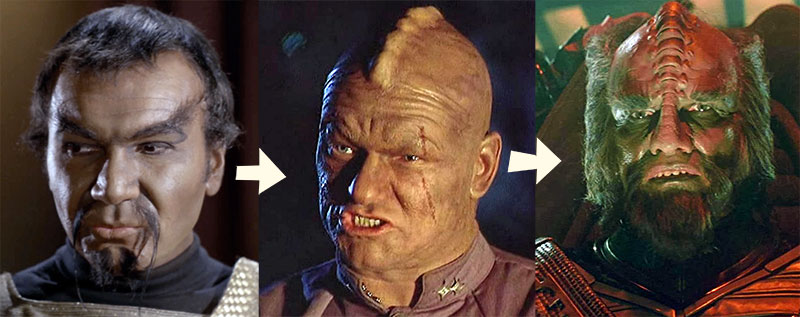
Planet Earth starts with an attack on a PAX landing party, uh, survey mission by a group of shoe polish faced marauders called the Klingons, uh, Kreeg. The Kreeg are a race of mutant humanoids who loved smoke-spewing custom cars and flashy neofascist fashion seven years before The Road Warrior committed to the whole post-apocalyptic drag racing thing. While the Kreeg are obviously inspired by Klingons, their sagittal bumps inspired the makeup used to depict Klingons in The Motion Picture. The look was probably created by Robert Kinoshita, the film’s art director and a master designer whose credits include Forbidden Planet and Lost in Space.

Nets and punches are thrown, stun guns are fired, rifles are rejected, and, dum, dum, dum, the only black guy gets shot. You didn’t see that coming, did you? The wounded minority in question is Pater Kimbridge, previously a major character played by the amazing Percy Rodriguez and now performed by an actor who only ever had bit parts on sitcoms. Kimbridge was the moral center of Genesis II. In Planet Earth he has two lines, one of them being, “uuuhhhggg!” The team drags him back to the subshuttle and attempts to stabilize him.
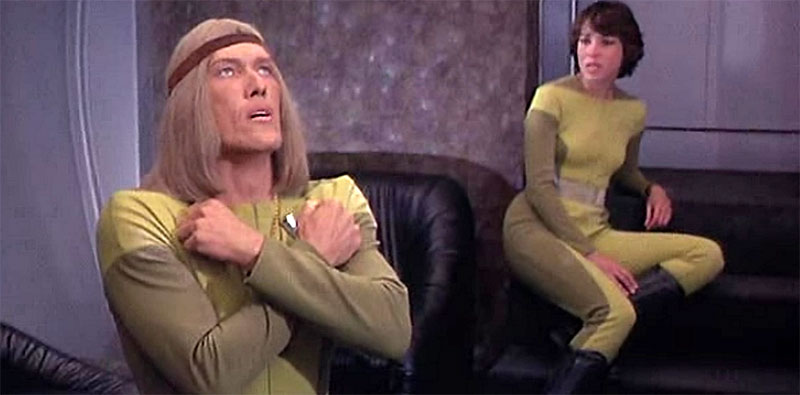
On the way, Isiah, the “White Comanche warrior” gets on his knees and prays in what I sincerely hope is not gibberish. Isiah is the only character from Genesis II that was not recast and is still played by lovable giant, Ted Cassidy. This moment of spirituality makes him even more like The Next Generation’s Worf than he was in the previous pilot. He’s the ethnic guy who’s into all the ceremonial stuff everyone else is confused by. His head band and necklace, like Worf’s sash, never let you forget he’s different. When one of the PAX asks Isiah to knock it off, presumably because the PAX are, like Roddenberry, all atheists, the doctor tells her… ok, let me warm up to this because it’s difficult to write out… “No, let the savage pray. It’ll help as much as anything I do here.” Let the savage pray. Sigh.

Star Trek has always mistreated Native Americans, with and without Gene. The show has consistently shown them as unchanging traditionalists and religious fundamentalists in a universe that is technologically and spiritually passing them by. The Original Series episode “Paradise Syndrome” features a group of Navajo/Mohican hybrids left on a planet by space anthropologists for five hundred years and they still look like something out of a Gene Autry film. They have no medicine and don’t even know how to dig an irrigation channel. The Motion Picture features several Native Americans in the rec room briefing scene wearing feathered and beaded headgear with their uniforms – single examples of traditionalism in a sea of culturally neutral officers and crew. Fast forward to The Next Generation episode “Journey’s End” and you have American tribes still running from the white man and doing a mishmash of rituals that belong to no one tribe. They’re as embarrassingly stereotypical as that colony of leprechauns was in “Up the Long Ladder”.
Kimbridge requires a kind of medical attention that only two people on the planet can perform. One is so far away even the subshuttle couldn’t retrieve him in time. The closer one disappeared out near “Women’s Country” over a year earlier. Hunt licks his lips, fixes his combover, and assembles his team. Women’s Country, here we come! But not all is well and good in the land of the Amazons. Hunt is horrified to learn that the men there are used as pack animals who are tied by the neck and sold as chattel. “Women’s lib gone mad!” Hunt proclaims!
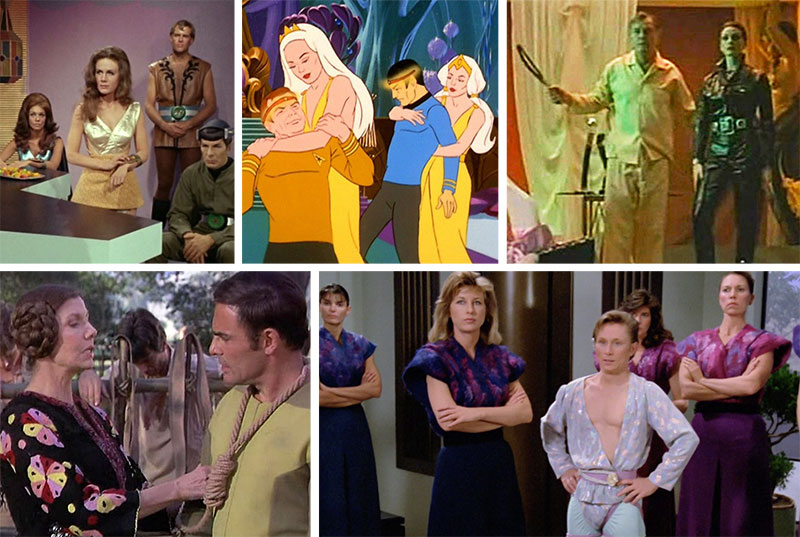
Dominatrix lead societies are something Roddenberry couldn’t get enough of. The concept first appears in his original 1964 series pitch “Star Trek Is…” with no less than two episode summaries exploring it. The first was called “The Venus Planet” and featured a race of women looking to entrap and possibly enslave men through their feminine wiles. The second, called “The Pet Shop”, has women owning and treating men like lapdogs. The first time it was put into action was Gene Coon’s script for “Spock’s Brain” in which a group of subterranean women abduct surface dwelling men for hard labor and breeding purposes (pain and delight, baby). “The Venus Planet” summary got fully scripted in The Animated Series episode “The Lorelei Signal”. Dominatrixes would appear again in the previously reviewed 1977 TV pilot “Spectre”, where a character I believe to be a proxy for Roddenberry himself is seduced, not by the servile nymphs that abound in the film, but by women in leather with riding crops and handcuffs. Roddenberry’s final attempt at the dominatrix society is Next Generation’s “Angel One”, which portrays women, not as seductresses, but, rather, physically powerful sultans who command harems of effeminate males in stereotypically objectified female roles. Planet Earth’s Women’s Country follows this approach the most closely.
There is one trait that all these dominatrix stories have in common – they have no comprehensible point to them. Not a single one says anything important about gender relations. In some cases the matriarchy exists only as set dressing. Without a complex and meaningful moral tale behind them one wonders if Roddenberry kept chasing this idea merely to indulge a fetish.
“Fetish” is the word that continually came to mind as I watched Hunt make his way through Women’s Country. His initial plan was to have himself snuck into the village as the slave of Harper-Smythe, the mousey PAX woman Hunt sexually harassed throughout Genesis II, here reimagined as a tough, spritely fighter who secretly crushes on Hunt. Their plan comes apart when Marg, the head matriarch played by the absolutely fabulicious Diana Muldaur, sucker punches Smythe and takes off with Hunt in tow.
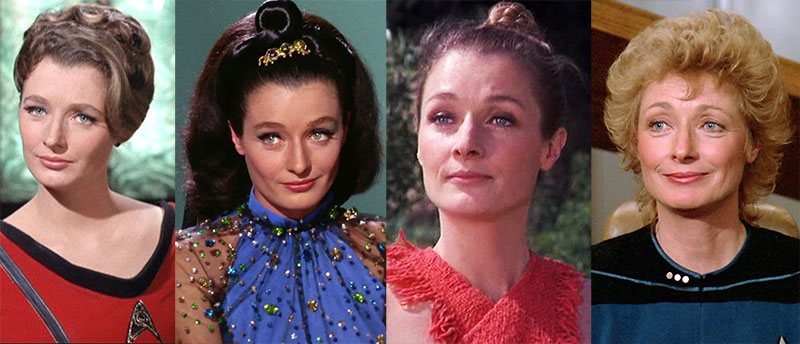
Muldaur is, frankly, a national treasure. Her presence is commanding in even the silliest of roles. Her previous experiences in Roddenberry’s works included the risk taking Ann Mulhall in the TOS episode “Return to Tomorrow” and the professionally obsessive, Miranda Jones, in “Is There in Truth No Beauty”. But my favorite of Muldaur’s Trek roles is as Katherine Pulaski in Next Generation’s second season. Pulaski is Gene’s best written female protagonist since The Cage’s Number One because she’s not a female archetype like, say, Uhura (secretary), Troi (empath), and Crusher (mom) were. She’s best described as a more social version of McCoy. Throughout her short tenure Pulaski served as foil or friend to nearly every character on the ship. She bonded with Worf and LaForge, argued passionately with Picard, made command decisions with Riker, and was the only crew member who mistrusted Data’s artificiality. She also showed more growth than any character on TNG by slowly becoming Data’s biggest champion by the season’s end. She was, above all, a challenging personality, and if there was anyone in the universe that needed a good challenging every once in awhile it was the buddy-buddy, feel-good crew of the Enterprise-D.
Hunt is immediately put up for auction and labelled a “breeder” due to his furry pecks and chiseled jaw. The women can’t help but paw and pull at him, making Hunt visibly uncomfortable. What’s worse, before anyone will purchase him, Hunt must be “tested”, which the women imply means public acts of nooky. See what I mean by “fetish”?
When Smythe finally regains consciousness she makes her way to the village where she earns the respect of Treece, a bohemian Amazon who believes men should be better treated, educated slaves, by defeating her in hand-to-hand combat. From her she learns that the men of Women’s Country are being drugged into compliance and, as an unfortunate side effect, impotence. Only Treece is refraining from drugging her men.
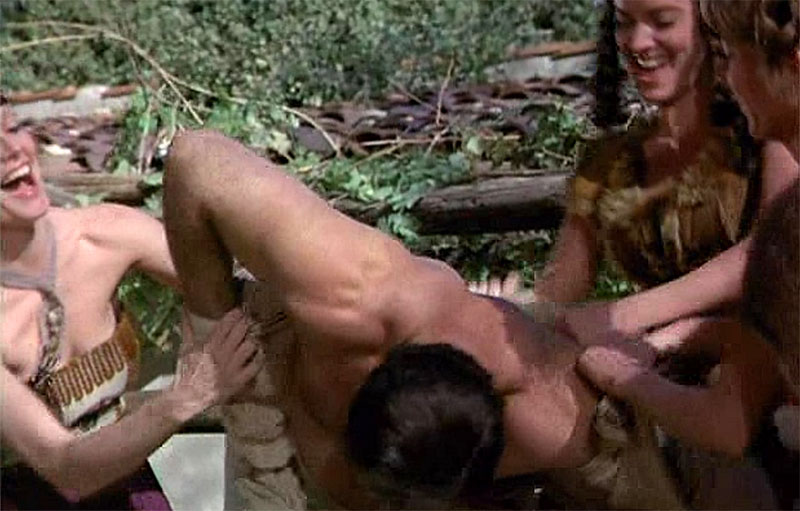
It’s not long before Hunt is also drugged and turned into a nervous, eye-averting lemur. Smythe finally makes it to the village center where Hunt is being bid on. As the Amazons playfully rip Hunt’s clothes from his body, Marg realizes she’s totally smitten and reaffirms her claim on him. If there’s any (sexy) testing to be done on this male, she’ll do it. Man, can this sound anymore like a porno? This scene gleefully reaffirms a core Roddenberryism – that men be as sexually objectified for the audience as women.
Smythe wastes no time in claiming Hunt was stolen from her and challenges Marg to a bout of fisticuffs for his ownership. A review I read dismissively calls this a “cat-fight”, but this is one of the few times in the Roddenberry filmography where women fight with actual cunning, strength, and technique. They don’t slap or pull hair, they throw real punches and kicks. If only they weren’t wearing high heels.
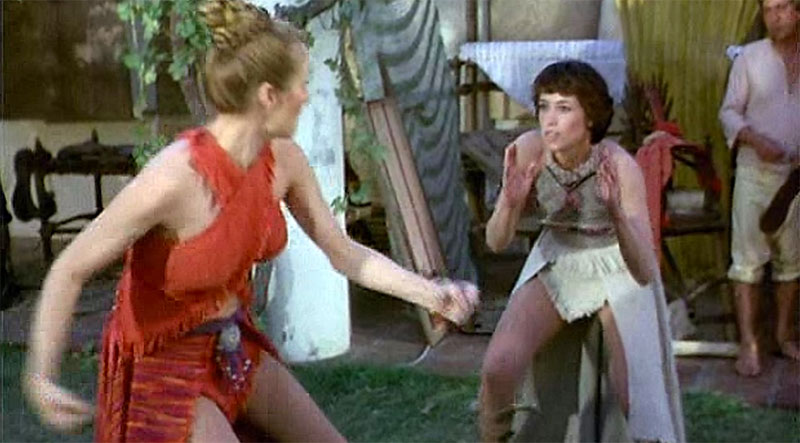
Smythe, again, wins the battle and makes friends with Marg. Unlike the menfolk, women feel no shame or resentment in defeat. Smythe asks her new chum if she’s seen another man who wandered in from the outside world. Marg doesn’t know, but offers Symthe a look through her herd and a place to stay in her home. The other Amazons hope Smythe and Hunt make lots of babies and wish for ones of their own. Treece tells them that if they stopped drugging their men it would happen. When Marg complains that men are too unstable to be controlled any other way, Treece snaps back that a real woman could never be dominated by a male… unless being dominated is what Marg secretly wants! Plot point! Plot point! Plot point!
Alone with the roofied up Hunt in Marg’s ranch house, Smythe can’t help but take advantage of his altered state and let’s him kiss her. They snog for a bit, but Smythe ends it before any real action can start. Apparently, her PAX ethics won’t allow her to rape her workmate, thank heavens! Besides, if she hadn’t called it quits, the sudden appearance of Dr. Connor, the dude they’ve been looking for, would have killed their buzz real quick. Connor has been living with the Amazons this whole time, pretending to be under the influence of the drug. The reason he never escaped was because he was working on an antidote to deliver to all the men at once, but, honestly, I think he just liked wearing clam diggers and that little, red bowtie.
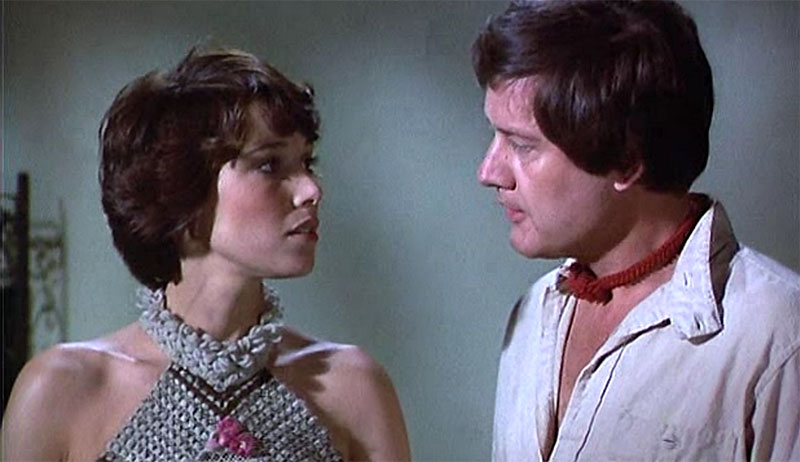
Connor cures Hunt of his shyness and the three of them come up with a plan to trade Hunt for Connor so he can get the rest of his concoction into the men’s gruel. Hunt will stay behind and keep Marg occupied until the others can escape. Can you guess how he does it? Hint: it rhymes with “Tex-Mex” and it’s just as delicious.
Playing upon Marg’s secret submissive side, Hunt shows subtle signs of spirited resistance, sitting at the table without permission and telling tall tales of his sexual conquests. Before long Marg has ordered copious amounts wine to be sent to her bedroom.
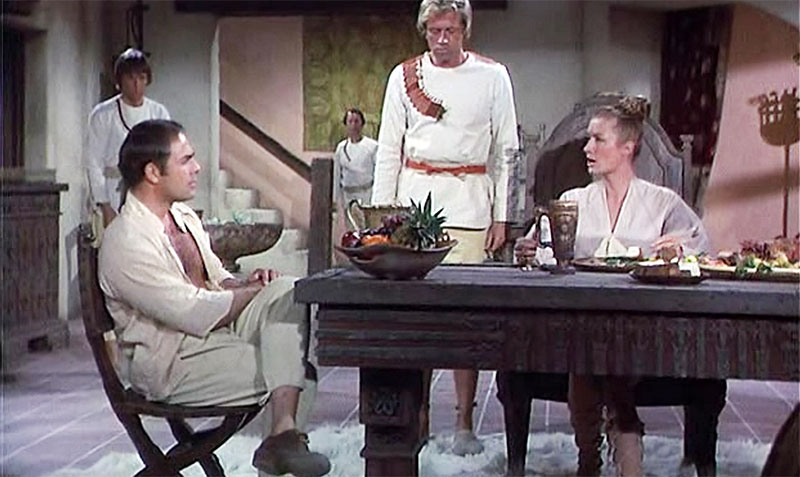
“The powerful woman who just wants to be walked all over in bed” has never been a trope I’ve bought into or experienced. I’m sure it exists somewhere, but not at the levels the media tends to imply. It seems more like a fantasy men have concocted to reassure themselves that even the most powerful woman can be knocked down a few pegs under the right circumstances.
And so, as the night goes on and Hunt plies her with more wine, Marg tosses away her whip, lays back, and lets him call her “pussycat”. Hunt, thinking he can out-drink his opponent has been sopping up the grape juice as well. In his pixellated state he realizes the patriarchy of his own time was no less silly than what the Amazons have created here. “Women’s lib! Men’s lib!” he slurs. “What do you say we dump them both? People’s lib!” In other words, #AllLivesMatter.
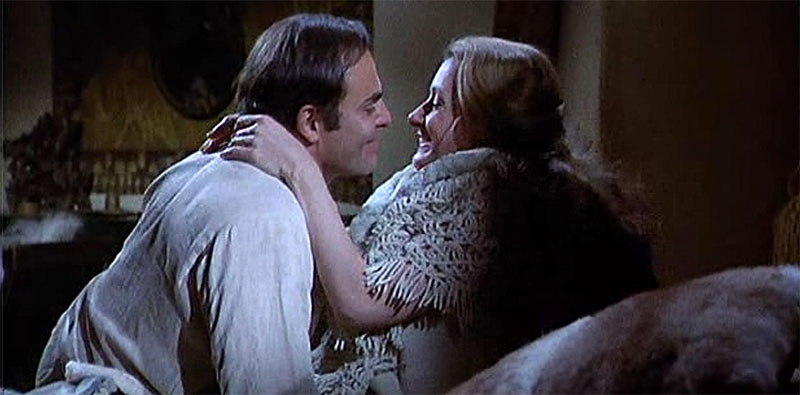
I’m going to admit, seeing these two fundamentalists drunkenly begin to respect and romance each other is undeniably adorable and fun to watch. I’ve said it before and I’ll say it again, Roddenberry is the master of creating chemistry between polar opposites. But while the conclusion, that everyone deserves liberty, not just women, sounds reasonable on the surface, in reality it’s wantonly obtuse. Of course everyone deserves liberty, but right now we’re talking about gender equality and one side obviously has less.
The Original Series episode “Let This Be Your Last Battlefield” suffers from the same kind of “everybody’s gotta give” fallacy. Lokai, the slave, is cast as being as crazy and short sighted as his oppressor, Bele. In the end they are said to be both equally responsible for destroying their world. But that’s not a fair conclusion. What are the oppressed supposed to do? How exactly do you compromise with a side that considers you to be only three-fifths of a person? Settle for being three-quarters of a person? Seven-Eighths? Civil rights is an all-or-nothing game. If the planet Cheron was destroyed it’s Bele’s people’s fault for not just accepting that Lokai’s people were, indeed, people, too.
But really, nothing in Planet Earth’s gender analogy works at all. I still can’t figure out if this is supposed to be a role reversal scenario or a warning about what feminism’s outcome would be if left unchecked. While women have never sought to dominate men, they also have never been drugged-up pack mules or breeding stock. Comparing women to completely helpless drones who need an outside force to rescue them is a denial of everything women have added to our culture and society even in the face of adversity and less-than-personhood. Add to that the fact that none of the sins the Amazons accuse men of land as true. They’re just random insults. It really is a straw man set up against a straw woman that creates nothing but a straw conclusion. Nobody wins.
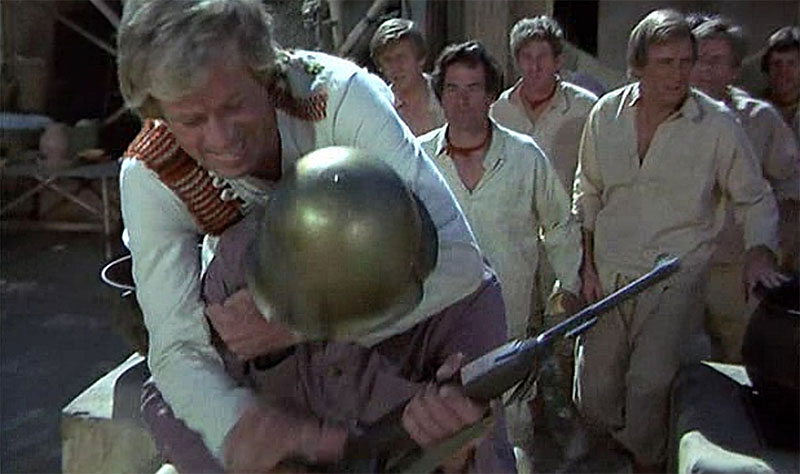
As the menfolk wake from their stupors thanks to Connor’s antidote, the Kreeg decide to attack. Marg faces off against them and gets slapped around a bit before Dylan rallies the men to battle. All together they protect the village and send the Kreeg running. Marg realizes undrugged men are an asset and agrees to never give them her potion again. The men are delighted and agree to stay as servants, but this time of their own free will.
Um, what? The men agree to stay slaves? What the heck kind of moral is this? Following the role reversal analogy to its logical end, is this what Gene wants from women? Willing compliance? I don’t think so. PAX’s egalitarian society – the purest expression of his utopian ideology – says otherwise. I think this topsy-turvy outcome was less a philosophical treatise and more the product of Gene trying to force his dominatrix fantasy to remain intact.
Another thing that bothers me about the film’s ending is the women’s complete inability to defend themselves against the Kreeg. They don’t have any guns or bows or even swords. This is, after all, a lawless and dangerous world. Even the pacifistic PAX have stun darts. It’s unbelievable that the Amazons don’t have some way of fending off an attack, either with their own skill or with their men as easily deployed infantry.
All in all, I’m not impressed with this Roddenberry effort. There’s some good stuff in here. I like Smythe’s new characterization, the uniforms are one of the best designs Theiss ever came up with, and concept of the PAX educating a 20th century brute is still alive and well. But with such a sloppy and dreadfully thought out moral conclusion I was left mostly wide-eyed in disbelief. What makes it even worse is that when Roddenberry had poor Patrick Barry remake this film as an episode of The Next Generation thirteen years later he didn’t learn a thing. In fact, it became even more confusing and unwatchable with men and women being put to death for… being married? Living in caves? And what was with the perfume virus? I didn’t get it. Planet Earth is at least entertaining with its bodice-ripping, drunken rambling, Kreeg punching good times. Despite the awesome eighties hair and Johnathan Frakes in a blouse, “Angel One” is just terrible.
Oh yeah, Pater Kimbridge lives. Did you care?
Stuff that didn’t fit anywhere else:
- Majel Barrett gets her smallest cameo yet as a dispatcher on a tiny view screen. It’s quite a demotion from member of the PAX leadership council. Another reason Genesis II is superior.
- When Hunt asks Marg if she believes in “people’s lib” she drunkenly raises her glass and proclaims “I believe in balance!”, referring the the amount of alcohol each of them needs before they can bone. Even smashed out of her mind she isn’t buying this crap.
- Villar, the slave auctioneer, wears the same hair buns as Princess Leia. I understand this is not a completely uncommon do, but it’s fun to know the two biggest sci-fi franchise creators used the same hairstyle three years apart from each other.
- At one point Isiah considers using one of the Kreeg’s rifles against them, but instead smashes it to remove the temptation. It’s a nice touch.
- “Of course you can touch me! Just why do you think you’re here?!” is the best line in the whole movie.
- Harry Sukman, who created Planet Earth’s jazzy, Jonny Quest style theme music also scored an episode of The Lieutenant, the show Roddenberry created before Star Trek that starred Gary Lockwood.
- Robert Justman produced Planet Earth. This would be the only time between the two Star Trek incarnations that he would work with Roddenberry.
- Saxon starred in a third attempt to bring the PAXverse to the small screen, this time as astronaut Anthony Vico. ABC aired the aptly named Strange New World in 1975. Because Roddenberry absolved himself of the project early on I won’t be reviewing it.
- I could be wrong, but Planet Earth’s title font seems to be a custom job done up in a bevel that would make a Sega Master System box artist proud. The credits font, however, is identifiable as Lydian Bold.








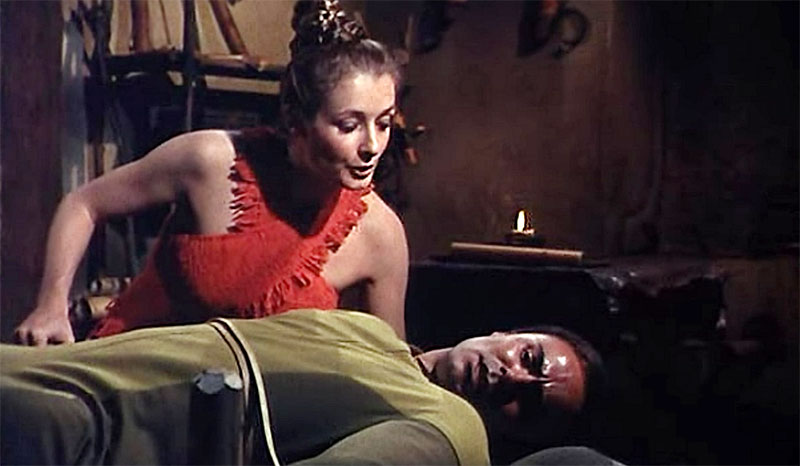








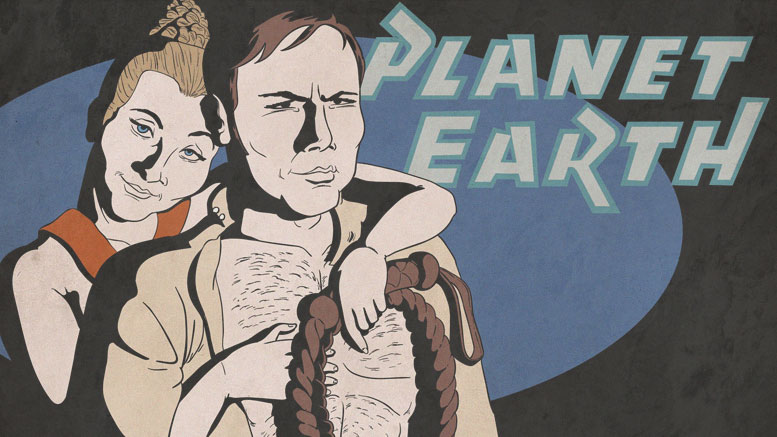
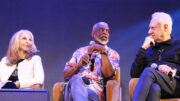
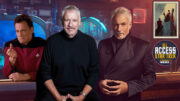
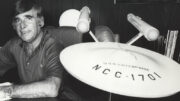
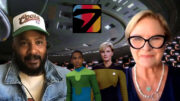
I don’t even need to read this piece to know that paying proper critical attention to “Planet Earth” is like shooting fish in a barrel. But I am looking forward to reading it, because this series of reviews is terrific.
I’ve enjoyed this series. Is this the last of the non-Trek Roddenberry projects there is to review?
Wasn’t “Planet Earth” a proposed script for the Genesis 2 series? History shows that the death of this project beyond the two pilots was probably a good thing. I do wonder though if someone like Ron Moore could do something cool with the premise the way that he turned the new Galactica into a work of art from its cheesy roots. Perhaps a reimagined Questor might work too, especially as the reality of AI and its effects on society are rapidly expanding.
2 weeks till “Pretty Maids all in a Row” recap !!!!!
I’m still waiting for that one. The flick turned up on TCM in the late summer of 2016; I don’t think it’s been run since. My take – “Summer of ’42”, which came out the same year as “Pretty Maids All In A Row” (1971), has a more mature attitude about sex than Roddenberry’s frequently juvenile romp. Look for some “Trek” actors in “Pretty Maids…” – James Doohan, William Campbell, Bart LaRue.
Very complete review with some good info on production. But I think the political/social analysis – some very good — needs context regarding the time. 70’s shows like “Charlie’s Angels” and “Three’s Company” hadn’t even aired yet — that’s the direction TV was going. Compare Roddenberry’s female roles to stuff like that — good and bad. I enjoyed PE when it aired, but was just getting into TOS reruns at the time.
MARK FARINAS,
Come on Mark, apples and oranges. There’s quite a big bit of difference between ordering another 30 minute fx free comedy pilot and an expense hour long fx SF pilot
MARK FARINAS,
Come on Mark, apples and oranges. There’s quite a big bit of difference between ordering another 30 minute fx free comedy pilot and an expense hour long fx SF pilot
I only mentioned recognizable shows to make my point quickly; That being ordering a second pilot was not a rare occurrence in and of itself in 1965. It’s another strike against the myth of Star Trek exceptionalism. This list is more extensive and includes genre shows and dramas: http://startrekfactcheck.blogspot.com/2016/04/second-pilot-episodes-before-star-trek.html
Plus, the Munsters, with its extensive makeup, costumes, and sets, hardly qualifies as an “fx free comedy”.
Except Star Trek is exceptional and there’s nothing wrong with that.
Star Trek is a snowflake.
I’ve found more second pilots since writing that, in fact. And while there’s certainly a difference between a half hour sitcom and an hour drama (the effects and sf genre are really irrelevant here; Mannix and Mission: Impossible were both more expensive than Star Trek, for example), none of the literature that I’ve read (a number of sources are cited in that piece) seemed interested in the distinction. In most cases, the mere existence of a second pilot episode for Star Trek was called “unprecedented.” This is simply untrue.
Michael K,
Re: I’ve found more second pilots since writing that…
I assume this means you are the author, Kmet, which means I should say , “Hi”, since its been awhile since we’ve engaged in such discussions.
Thanks for chiming in. But I am curious, does Poe’s “fair” point still hold?
That’s me.
I assume you are referring to Poe’s claim that a network had never ordered a second pilot after rejecting an initial pilot before Star Trek (if my understanding is incorrect, please let me know). Although this is more subdued than later claims about the seond pilot being “unprecedented,” it still doesn’t hold water — in the article I wrote on this subject, several of the second pilots listed were cases in which a network had rejected a pilot, but asked for a second try.
Mark2000,
Re: That being ordering a second pilot was not a rare occurrence in and of itself in 1965.
Well, if that’s your sole point, i.e. that it’s been blown out of proportion over the decades, then I can nod to that. However, please note that your own cited source says, “To be fair to Whitfield (the nom de plume of Stephen Edward Poe, who shared credit with Gene Roddenberry, but wrote most of the book himself), he wasn’t claiming that a second television pilot had never been produced for the same property before — only that, prior to Star Trek, no television network had ever asked for a second pilot episode after rejecting the first one.”
And the use of common stage FX in THE MUNSTERS pilot hardly compares to the extensive for more expensive optical FX which traditionally comes to mind when one thinks of the STAR TREK pilots. For one thing, in THE MUNSTERS you could see “strings” being used all over the place even on 60s’ vintage sets.
And the far less expense of such comedies, were what NBC was angling to scoot Trek off the air in the first place when they first considered cancelling it.
What ever logical twists and turns you need to make to have Star Trek be the first/only/most impressive second pilot ever ordered, buddy.
Mark2000,
Re: …have Star Trek be the first/only/most impressive second pilot ever ordered…
You mean something like, for example, saying that it was the first “rejected” pilot that went on, with some minor tinkering, to actually get aired despite that flat rejection and win a Hugo Award for “Best Dramatic Presentation” to boot?
Which Michael K’s research states “doesn’t hold water”. Reread his comment above. You’re wrong and you keep trying to move the bar in order to be right. Sorry to break it to you, pal.
My phrasing could have been quite a bit sharper in the beginning of that piece. Poe’s first sentence in the disputed passage is “NBC shattered all television precedent and asked for a second pilot.” To be straightforward, that’s bunk, and it’s not hard to see how subsequent sources exaggerated Poe’s claim even further.
Mark2000,
Re: …keep trying to move the bar in order to be right.
I’m doing nothing of the kind. I know people on this side of the millennium aren’t much for checking footnotes, etc. but I was citing Poe’s claim in the sentence prior to the one where he made the claim that riles you so in THE MAKING OF STAR TREK on page 126:
“They had simply chosen the wrong story among the three that Gene had submitted prior to developing the script.*
Thus NBC shattered…”
The asterisk was a footnote which read; “Gene’s personal feelings about THE MENAGERIE were vindicated when, about a year later, this rejected first pilot film was expanded into a two-parter, it won science fiction’s coveted Hugo Award.” — THE MAKING OF STAR TREK by Stephen E. Whitfield, Ballatine Books, Copyright 1968, 6TH printing October 1970
Thanks again for the sharp, articulate, and clever review of another lost 70s confection. I just started watching it based on the review and being able to notice the 3rd season Trek uniform fabric was super neat. This review was especially effective with the smart selection of visuals that give the historical context. So much expertise and brain power went into this review. A wondrously delicious geek banquet of ideas, retrospections, and nostalgia. (I remember seeing this on television in the mid 70s and not being interested enough to attend to it. Played in the background while I did homework …).
What planet was this set in?
Or on, I should say. But on a more serious note, it’s interesting to observe that this production occurred well before the Mad Max films popularized post-apocalyptic settings. It was thus in that way a bit prescient.
Further, the tenor of the times — post-Nixonian? — and the history of America (the Vietnam War in particular) make this an interesting look into the intellectual views of that era.
Didn’t they pick up SIX MILLION DOLLAR MAN over this?
I don’t think so. Six Million Dollar Man came out on ABC in 1973, a year before Planet Earth was aired. Unlike Genesis II, I don’t think Planet Earth was passed over for anything. ABC did a second pilot treatment of the concept without Roddenberry the very next year called “Strange New World”.
Mark2000
If I recall correctly, THE SIX MILLION DOLLAR MAN, started out as a series of TV movies before ABC committed to a regular TV series so it’s possible.
Mark2000
https://archive.org/stream/starlog_magazine-051#page/n39/mode/2up
“When we did Planet Earth, ABC insisted on doing a story I thought was wrong. It was kind of a women’s lib story set in the future and wasn’t very interesting. I think what they had in mind when they pushed us in that direction was that they would be ‘science fiction women’ with long legs, silver costumes, and well-endowed. And after we shot it, they came in very upset and disappointed. They didn’t realize that’s not my kind of science fiction and I was surprised they thought I might do that kind. I was trying to design a believable society that might exist under those circumstances — nothing like they had in mind. It was a break down in
communications that contributed to the outcome of Planet Earth.” — Gene Roddenberry, October 1981
LOL. Gene could certainly spin a yarn, couldn’t he.